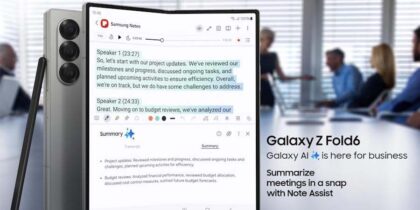With more than 67 percent of American adults now toting smartphones, it’s little surprise that retailers are increasing their investment in mobile commerce. According to a new report, smartphones have topped tablets as the leading driver of mobile retail sales and traffic. While Forrester Research’s findings aren’t particularly remarkable, the way that retailers are addressing the changing mobile commerce landscape certainly is.
The Forrester report, “The State of Retailing Online 2016: Key Metrics, Business Objectives and Mobile,” substantiates the growing use of smartphones in mobile commerce, and outlines retailers’ key priorities for the coming year. Mobile tops retailers’ 2016 priority list, with the majority (67 percent) of merchants looking to increase their mobile commerce investments and “eagerly leaning into the channel to grab as much share as they can,” the report indicated. Retailers said purchases made with smartphones accounted for 17 percent of online sales in 2015, moving ahead of total online sales made via tablets (14 percent) for the first time. Year-over-year growth in sales made with smartphones was 53 percent, compared to 32 percent via the tablet. In 2015, 29 percent of mobile traffic came from smartphones and only 15 percent from tablets.
Yet until now, investments in smartphone initiatives have been modest, according to Forrester. In 2015, 65 percent of retailers said they invested less than $50,000, and only 20 percent invested between $50,000 to over $1 million. As many as 30 percent of retailers invested less than $10,000 in 2015, and 18 percent made no smartphone investment at all.
Mobile Among Top Three Priorities
The majority (59 percent) of merchants surveyed said mobile was among their top three digital business priorities in 2016. Sucharita Mulpuru, lead analyst and writer on the Forrester report, says that most retailers “are investing in responsive and adaptive design, to ensure their smartphone pages render better.” The other two leading digital investment areas for 2016 were marketing and site merchandising.
Forrester found that retailers have grown more anxious to drive more sales through mobile devices, given today’s rapid growth in mobile traffic and flatter year-over-year retail sales. “Mobile represents hope in the online retail landscape,” the report stated. This enthusiasm is confirmed by retailers’ growing investment in smartphone technology in 2016. The survey predicted that 34 percent of retailers will expand their investment by up to 20 percent, and 33 percent of retailers will grow it more than 20 percent. In comparison, about 22 percent will increase tablet investments by more than 20 percent in 2016, and 43 percent will not grow it at all.
Balancing Investments Is Key
NRF Senior Vice President and Shop.org Executive Director Vicki Cantrell said in an NRF press release that strong customer engagement strategies are supported by mobile platforms that offer the ability to research in-store availability of items and give shoppers the “click and buy” ease they’re becoming familiar with. According to Cantrell, this is part of modern-day shopping for consumers, while for retailers, it’s a constant need for balance in investments in mobile experience and infrastructure. “Retailers are now recognizing that their customers may not need a more expansive shopping experience on mobile platforms ― they need a consistent, relevant and user-friendly experience that will shape their online and in-store shopping behaviors,” said Cantrell. Even with relatively small mobile investments, retailers are seeing tremendous growth in sales through smartphones and in customer engagement from mobile across the brand.
Most end users utilizing smartphones to conduct mobile online shopping “just want the basics,” says Mulpuru. “They don’t need a lot of bells and whistles. Much of today’s push-based communication isn’t all that helpful, unless, say, it’s an offer for a free latte nearby at 8 a.m. But that’s a challenge because I think this type of messaging, while relevant and effective, isn’t all that profitable. The low-hanging fruit is just making sure that the content renders well, particularly on the top-selling smartphones. That’s doesn’t appear as a tall order ― but it’s not as easy as it sounds.”
For more information about mobility trends in retail, visit our solutions page.








